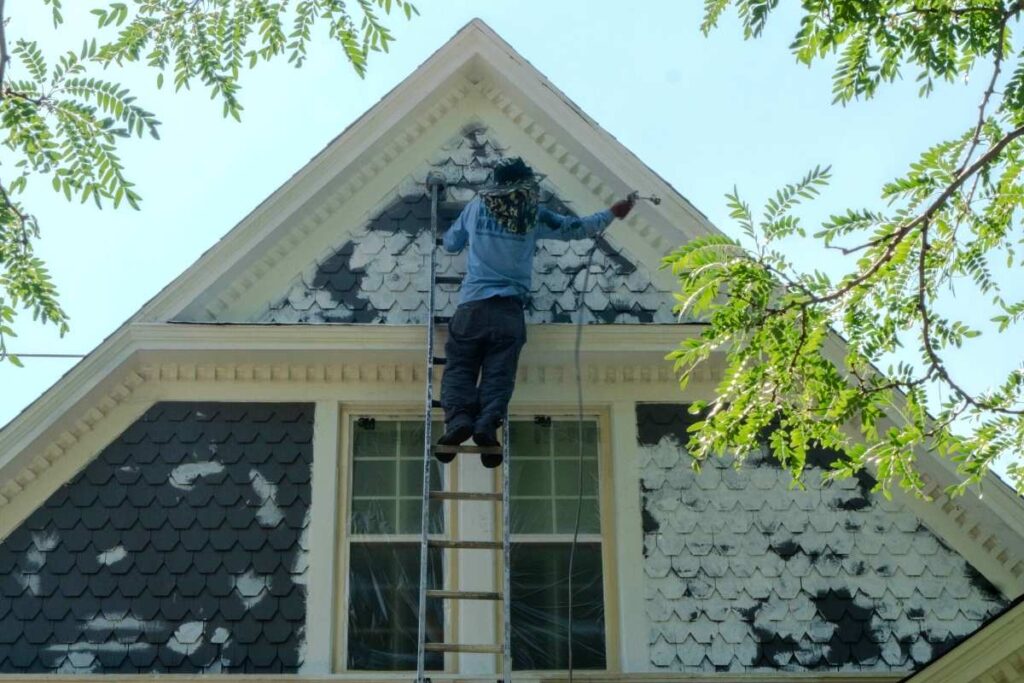Exterior Painting: Important Aspects to Consider
The exterior of your home or business is the first thing people see, making it essential to maintain its appearance and protect it from the elements. One of the most effective ways to enhance the curb appeal and longevity of your property’s exterior is through regular painting. However, exterior painting involves more than just choosing a color and applying it to the walls. There are several important aspects to consider to ensure a successful and long-lasting paint job.
Surface Preparation
Proper surface preparation is the foundation of a successful exterior painting project. Before applying any paint, it’s crucial to thoroughly clean the surfaces to remove dirt, mildew, and any loose or flaking paint. This can be done through pressure washing, scraping, sanding, or using chemical cleaners as needed. Additionally, any cracks, holes, or imperfections should be repaired with caulk or spackle to create a smooth and uniform surface for painting.

Choosing the Right Paint
Selecting the appropriate type of paint is essential for achieving durable and weather-resistant results. When painting the exterior of your home or business, it’s recommended to use high-quality exterior paint specifically formulated for outdoor use. These paints are designed to withstand exposure to sunlight, moisture, temperature fluctuations, and other environmental factors without fading, peeling, or deteriorating prematurely. Additionally, consider factors such as sheen (e.g., matte, satin, semi-gloss) and color retention when choosing your paint.
Climate Considerations
The climate and weather conditions in your area can significantly impact the longevity and performance of exterior paint. For example, regions with extreme temperature fluctuations, high humidity, or frequent rainfall may require different types of paint or additional protective coatings to ensure durability and resistance to moisture damage. It’s essential to consider these climate factors when selecting paint products and planning the timing of your painting project to avoid adverse weather conditions.
Proper Application Techniques
The application of paint is just as important as the quality of the paint itself. To achieve professional-looking results and maximize the longevity of your exterior paint job, it’s essential to use proper application techniques. This includes using high-quality brushes, rollers, or sprayers appropriate for the type of paint being used and applying the paint evenly and consistently across all surfaces. Additionally, be sure to follow the manufacturer’s instructions regarding drying times, temperature requirements, and recommended application methods.
Safety Precautions
Safety should always be a top priority when undertaking any painting project, especially when working at heights or using potentially hazardous materials. Be sure to use appropriate personal protective equipment, such as gloves, goggles, and respirators, when handling paint and paint-related chemicals. If working at heights, use ladders or scaffolding that are properly secured and stable to prevent accidents or injuries. Additionally, take precautions to protect surrounding areas from paint splatter or overspray, such as covering windows, doors, and landscaping with drop cloths or plastic sheeting.
Maintenance and Care

Even with proper preparation and application, exterior paint will eventually require maintenance to keep it looking its best and protect the underlying surfaces. Regular inspections should be conducted to identify any signs of wear, damage, or fading, such as peeling, cracking, or discoloration. Promptly address any issues by cleaning the affected areas, making necessary repairs, and touching up the paint as needed to prevent further damage or deterioration. Additionally, consider scheduling periodic repainting or resealing every few years to maintain the integrity and appearance of your property’s exterior.
In conclusion, exterior painting is a valuable investment in the maintenance and aesthetics of your home or business. By considering important factors such as surface preparation, paint selection, climate considerations, application techniques, safety precautions, and maintenance, you can ensure a successful and long-lasting paint job that enhances the curb appeal and protects the integrity of your property’s exterior for years to come. Whether you’re tackling the project yourself or hiring a professional painting contractor, attention to these aspects will help you achieve the best possible results and make your property look its best.
